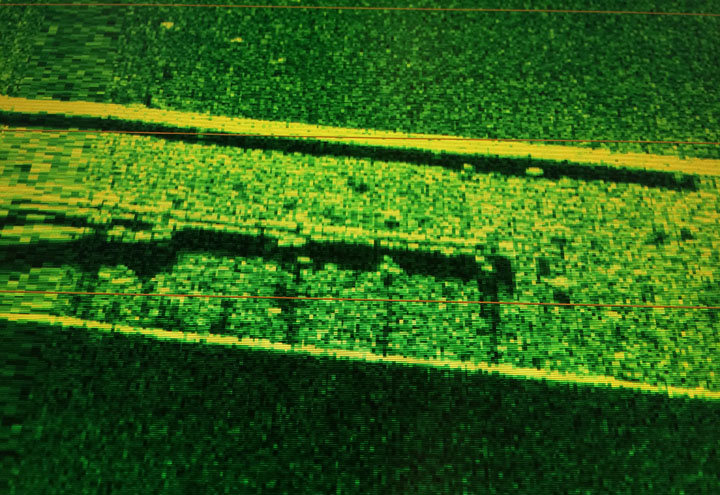MARBLEHEAD, OHIO – This was more than just another sunken ship.

When Tom Kowalczk saw the image on sonar while out on his boat near on Lake Erie over the summer – he knew what it was right away.
“It looked very much like an oil tanker,” says Kowalczk, the Marblehead, Ohio resident and long-time ship hunter.
READ MORE: Hundreds of shipwrecks pose environmental threat to Canada’s coasts
“It was the Argo.”
The 120-foot barge disappeared near the U.S.– Canada border after a storm on Lake Erie in 1937. The Argo was believed to be carrying close to a million litres of fuel when it went down.
As soon as the U.S. Coast Guard confirmed the Argo was leaking oil, a salvage operation recovered close to 185,000 litres of benzene mixed with water from the sunken ship.
United States made finding shipwrecks a priority
The Argo was one of 87 priority vessels identified in a 2013 study by the National Oceanic and Atmospheric Administration (NOAA).
Congress tasked the NOAA to find and prioritize the risk vessels, such as the Argo, posed after mystery spills in U.S. waters were found to have originated from historical shipwrecks.
“Every time we have a mystery spill we pull up that … database and see what vessels might be in the area and be the source of the mystery slick,” says Jacqi Michel, one of the authors of the NOAA report.
“That’s very powerful.”
Historical shipwrecks a global problem
Oil pollution from sunken ships is not just a U.S. issue; it’s a concern worldwide. According to a study in 2005, it was estimated there could be up to 22 billion litres of fuel and more than 8,500 at-risk vessels under the world’s oceans. Many of these vessels sunk during or around the Second World War and continue to deteriorate.
(Michel – who happened to be the lead author of that report – notes some of those fuel totals have since been scaled back after more countries began doing comprehensive waters surveys.)
Outside the U.S., Sweden and Australia have been world leaders.
“Both nations have pretty pro-active oil spill response prevention organizations … who have identified this as a potential source because of experience from leaking vessels in the area… ‘We can’t just wait for everyone to leak … we need to be proactive’ and went after it because of their history of having spills,” says Michel.
In the Baltic region for example, Swedish, Estonian and Finnish researchers, in a joint effort, identified more than 1,000 problem wrecks in the northern Baltic Sea as part of the Sunken Wreck Environmental Assessment (SWERA). SWERA is in the process of prioritizing the risk these ships pose.
Canada doesn’t track sunken ships
In Canada, no comprehensive shipwreck studies have been done.
READ MORE: Oil leaking from shipwreck threatens small Newfoundland community
The “Government of Canada does not hold an inventory of sunken vessels in waters under Canadian jurisdiction,” the Department of Fisheries and Oceans (DFO) said in an email response to a query by 16×9.
“I think if I were to interpret what you’re saying … Canada has a little bit of the out of sight, out of mind mentality,” says Michel.
16×9 analyzed shipwrecks data from the beginning of the 20th century, more than 700 at-risk vessels in Canadian waters were identified.
Based on available information 16×9 mapped out at-risk ships in Canadian waters. The coordinates on the map are only approximations; much of the data from the early 20th century was done prior to GPS and was sometimes incomplete.
Global cleanup could cost billions
While there is no easy or cheap way to fix the problem, experts say removing oil from sunken ships doesn’t have to be done all at once.
“I’m a big believer what you do is you develop a database you identify where they are where they might be, be cognizant of where spill releases can occur.”
16×9’s “An Oil Spill a Day” airs Saturday, Jan. 23, 2016.





Comments